Motorcycles and Ergonomics: What it means to you
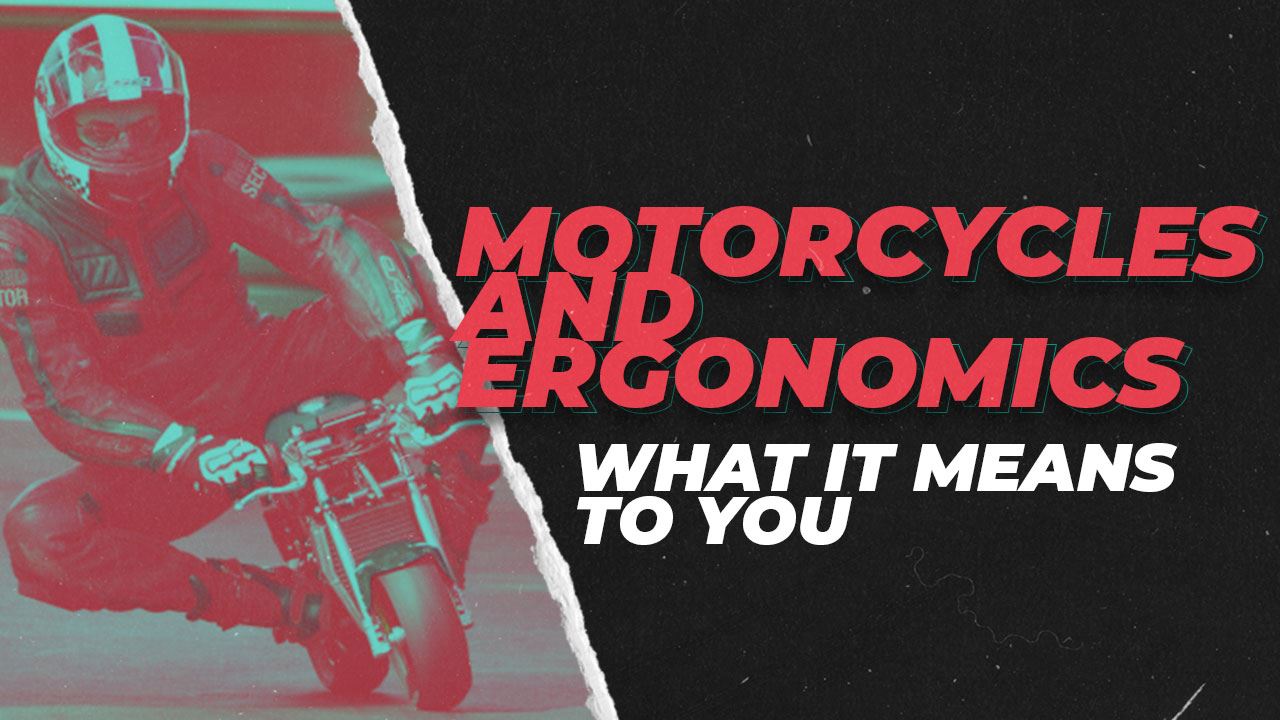
Motorcycles and Ergonomics: What it means to you
A sports bike overtakes me on the way into a village. As we slow down and run through the speed limit sign the rider takes his left hand off the handlebar and shakes his wrist, not in the way some riders do when demonstrating their opinion of an errant car driver, but in the way you do when you are trying to ease some pain or return some blood flow. And on a mid-size Japanese sports bike it would not have been due to vibration or a heavy clutch.
We all experience some form of discomfort when riding, especially if you cover many miles on a motorway in a state of postural fixity. We need movement, opening and closing the throttle, using the brake and clutch, shifting our body through corners, to vary our position and create weight transfer. The discomfort the rider of that bike experiences is due in part to the riding position on a sports bike, where you are leaning forward and supporting your weight through your wrists. On an adventure bike or a cruiser that isn’t an issue. But it may also have something to do with his physique and how well he fits his bike, and how he rides it. A tall rider on a sports bike will be in a different position on the bike relative to the handlebars, seat and footpegs than a shorter rider, and a slow rider on a sports bike will not have as much of his weight lifted off his wrists by the airflow as a fast rider. So there are three things here, you, the bike you ride, and how you ride it.

A matter of choice
Many of us choose a bike because we love its looks, or because of the crazy performance or the faultless handling, maybe some of each. Maybe it is the bike of the year and the one to be seen on. But maybe sometimes some of us don’t pay enough attention to the type of bike in relation to the sort of riding we do, and what suits our physique, comfort requirements, and riding style. If you ride a bike that you love but it is uncomfortable and causes you pain, if the wrong riding position is spoiling the ride, then you need to rearrange yourself using the principles of ergonomics.
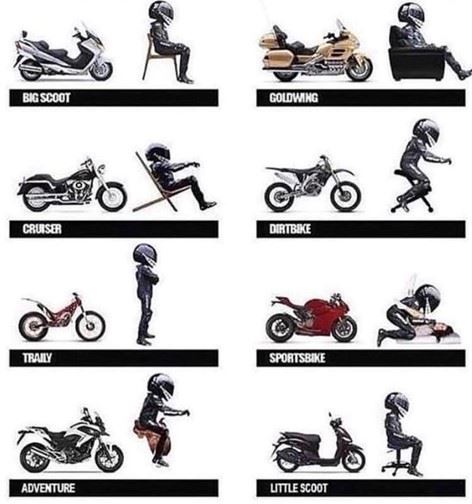
The definition of Ergonomics
Ergonomics is “the scientific discipline concerned with the understanding of interactions between humans and elements of a system”, or more concisely the study of how humans interact with manmade objects. It is concerned with designing and arranging things people use so that the people and things interact most efficiently and safely. An ergonomist applies theory, principles, data, and methods to design in order to optimize human well-being and overall system performance. For example, an ergonomic chair may help support your lower back and prevent you from slouching. An ergonomic desk may adjust to the appropriate height so you can sit up straight and view your monitor at the right level.
Translate that to a motorcycle and it is all about your seat height, handlebar position, and footpeg position. The problem is that no two people are the same, so when it comes to designing a motorcycle the ergonomists probably just use an averaged human form that they hope will suit more people than not. But as a rider you need to factor in personal preferences as well as your physique. So how do you go about making your motorcycle the perfect fit for you?
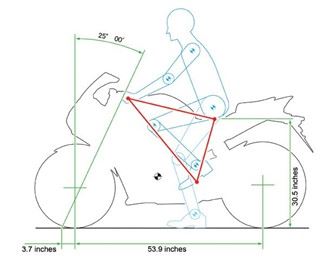
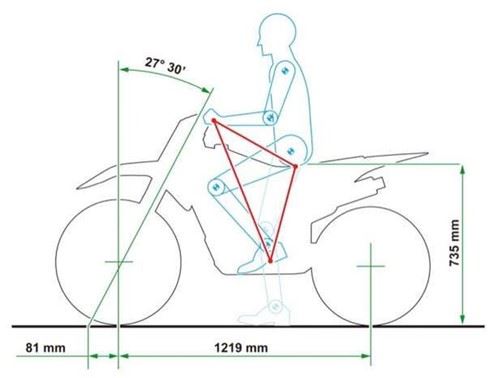
Fortunately, it is not as difficult as you may think. There is a huge range of aftermarket parts and accessories available to motorcyclists that will alter your riding position, but we do not always buy them with that purpose in mind. Often we buy them solely because we want to display a particular product or style irrespective of its ergonomic potential, and whether they improve your comfort or detract from it is hit and miss, or maybe neither here nor there. But if comfort is important, when you take the time to analyse your anatomic, physiological, and psychological variables and preferences, reconfiguring and perfecting the riding position to maximise comfort is often easily achievable. But it does help to be on the right type of bike in the first place, to minimise the amount of change needed. And be aware that being comfortable on a motorcycle is an important aspect of your health and safety, especially on long rides.
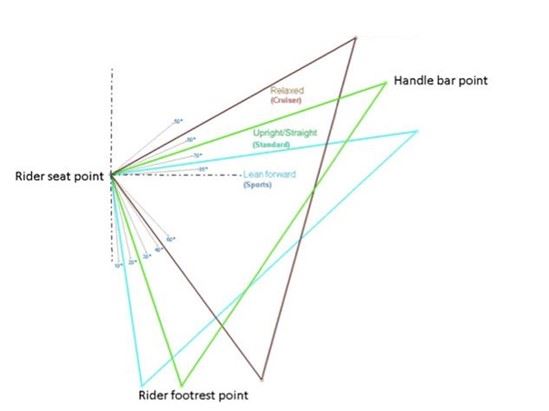
Adjusting your riding position
When it comes to how you are positioned on a motorcycle the parts that have all the influence are your seat, your handlebars and your footpegs, but your levers and pedals play a part too. When you consider all the available products the degree of adjustability is extensive, and most riders should be able to achieve an ideal riding position. If you can’t it could be that you are riding the wrong bike.
Seats
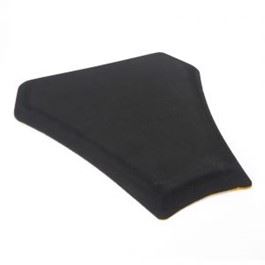
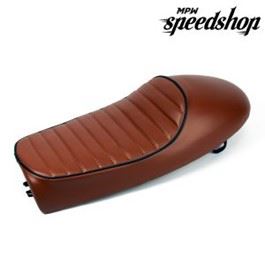
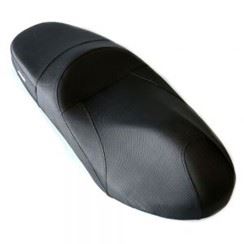
Seats, like bums, come in all shapes and sizes
Soft? Hard? Wide? Narrow? Gel? Memory foam? The choice is extensive, the variation in price extreme, and comfort is subjective and not something that can be measured using a ruler. So when you buy a seat you do not know whether you are making the right choice until you use it, and if you get it wrong it may not be possible get your money back. It is sometimes better to increase, decrease or reshape the padding in the seat you have, so you can make minor adjustments and check the fit each time. If it goes well you end up with the perfect seat, and if the changes are not excessive you may not even need to fit a new cover. Even if you end up not using the seat, making those adjustments at least gives you a good idea of the attributes required in a replacement.
Handlebars and handlebar risers
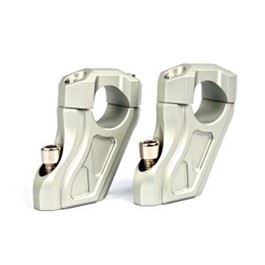
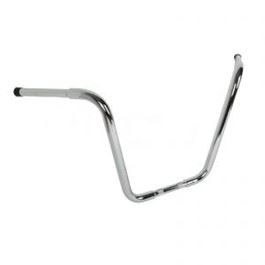
Some bars need risers… ...some don’t
Handlebars come in all shapes and sizes, but the diameter of your existing ones and how they mount are important when looking for a replacement. There is a huge range of one-piece handlebars to choose from, but with two-piece bars the choice can be quite limited. With handlebars it is easy to determine what you want before you buy by knowing whether your existing ones are too high or too low, too wide or too narrow, set too far forward or too far back. Handlebars are easy to measure, as is the difference between their existing position and one that offers more comfort, though you may need some help with the measuring while you do the posing.
The alternative to fitting new handlebars is to fit a set of risers. These fit onto the existing holder in place of your handlebars, and then you fit the handlebars onto the risers. In their simplest form they give a straight raise, and some also offer a forward or back offset, but adjustable ones are available that give the option to vary the amount of raise and offset. Knowing exactly what you are after makes product selection far easier, but a degree of adjustability does allow you to fine-tune the final position.
One of the main problems with fitting new handlebars or risers is that, depending on the degree of difference they make, your existing wiring, cables and hoses may become tight and restricted to the point of no longer being safe to use. It is often possible to gain some extra play by releasing guides and ties, or maybe by altering the routing, but you cannot always get all the play you need at all steering angles, especially in cables and hoses. Fortunately Brake and clutch hoses are relatively easy to sort as lengths can be made up to suit, as can cables when using the Venhill universal kits, but wiring is more complicated, and a lack of aftermarket extension looms means some after-market connectors and a crash course in rewiring may be the only option.
Footpegs
Lowering your footpegs has the obvious benefit of reducing knee bend, which for some is important, but this comes with the downside that it reduces ground clearance. For riders that rate comfort above lean angle this is not a problem. On sports bikes there is the option of fitting rearsets for an even more radical riding position, and on the opposite end of the ergonomic scale there are forward control kits that can be fitted to choppers and cruisers. One thing to consider is that an alteration in the position of the footpegs may affect the relative position of the brake pedal and gearchange lever, which may then need some adjustment as well.
Levers and pedals
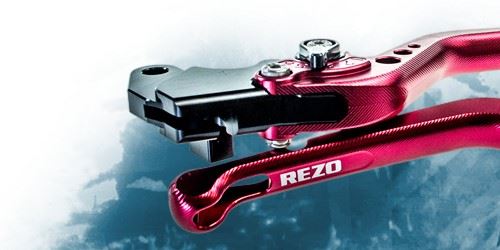
Brake and clutch levers with an adjustable span are often fitted as standard equipment, though their after-market equivalents invariably look much better. Extendable levers are also available. Gearchange levers with linkages have always been height adjustable, and levers without linkages can be rotated on the shaft splines. The pushrod on the rear brake master cylinder usually has some adjustment that changes pedal height. Extendable gearchange levers and brake pedals are also available, and on many of them the toe piece can be moved as well.
Getting it right
Getting you riding position exactly right may entail more than you first realise, as changing one aspect often affects the others. For example, you may raise your handlebars to achieve a more upright riding position and then find that that you want to reshape your seat slightly. If you are a short rider on a tall bike you may want to lower the seat, but doing this will increase knee bend, so you may then want to lower your footpegs and adjust your brake pedal and gearchange lever.
But it is worth taking the time and effort to get it right, as the benefits of a better riding position are manifold, the main and obvious one being that you are more comfortable. That comfort gives you the desire and ability to ride more, and makes you feel more relaxed when you do, which inspires confidence and ultimately makes you a better rider. And you feel more at one with your bike, which can only be a good thing.
To see the range of handlebars, risers, seats, levers pedals, and footrests available from MPW visit motorcyclepartswarehouse.co.uk/general-parts.
To see all the products available from MPW visit motorcyclepartswarehouse.co.uk and either browse our categories or search by bike using our Parts Finder.
